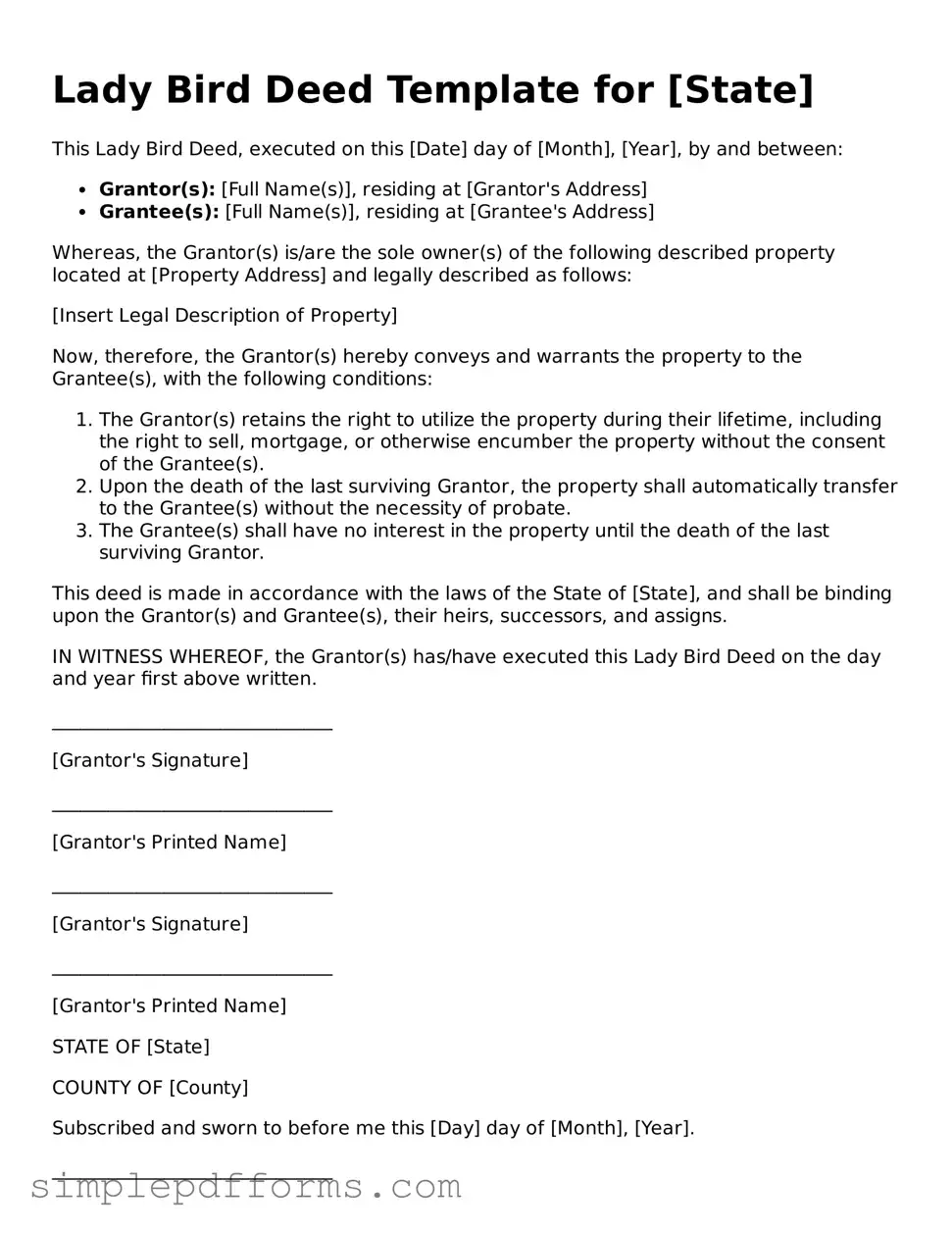Lady Bird Deed Template for [State]
This Lady Bird Deed, executed on this [Date] day of [Month], [Year], by and between:
- Grantor(s): [Full Name(s)], residing at [Grantor's Address]
- Grantee(s): [Full Name(s)], residing at [Grantee's Address]
Whereas, the Grantor(s) is/are the sole owner(s) of the following described property located at [Property Address] and legally described as follows:
[Insert Legal Description of Property]
Now, therefore, the Grantor(s) hereby conveys and warrants the property to the Grantee(s), with the following conditions:
- The Grantor(s) retains the right to utilize the property during their lifetime, including the right to sell, mortgage, or otherwise encumber the property without the consent of the Grantee(s).
- Upon the death of the last surviving Grantor, the property shall automatically transfer to the Grantee(s) without the necessity of probate.
- The Grantee(s) shall have no interest in the property until the death of the last surviving Grantor.
This deed is made in accordance with the laws of the State of [State], and shall be binding upon the Grantor(s) and Grantee(s), their heirs, successors, and assigns.
IN WITNESS WHEREOF, the Grantor(s) has/have executed this Lady Bird Deed on the day and year first above written.
______________________________
[Grantor's Signature]
______________________________
[Grantor's Printed Name]
______________________________
[Grantor's Signature]
______________________________
[Grantor's Printed Name]
STATE OF [State]
COUNTY OF [County]
Subscribed and sworn to before me this [Day] day of [Month], [Year].
______________________________
[Notary Public's Name]
My commission expires: [Expiration Date]
